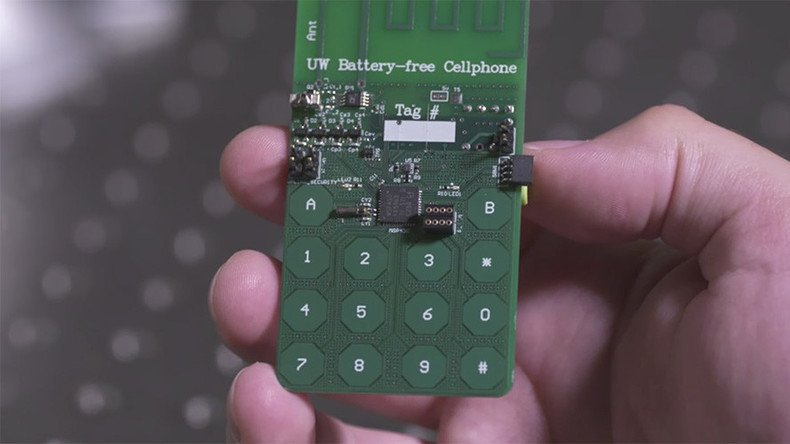Bye bye chargers: Soviet technology key to new battery-free cell phones

Smart phone users rejoice – researchers have created a phone that works without a battery. The team from the University of Washington took inspiration from a Cold War spying device hidden within a US seal of office which used radio waves to power itself.
The battery-free phone was successfully tested using Skype, making a call and communicating with the receiver without any battery being required.
The audio produced may have pops and static, and it might be some way from harvesting enough power to use Tinder, but the phone managed to hold its own in a conversation without a charger in sight.
“My dad was a spy in the Cold War, so I heard stories about the Great Seal bug when I was a kid," researcher Joshua Smith told Wired. Known as the Great Seal bug, the covert listening device was hidden in a US seal and used passive techniques to transmit an audio signal.
Smith and his team used this concept to create the battery-free phone, that reduced its reliance on power to a few microwatts, harvested from radio frequencies transmitted by a base station. The phone also utilizes ambient light in generating power.
This video is brought to you NOT by #Samsung: #NASA military robot exploding due to battery failure (VIDEO) https://t.co/TgqOUTcanApic.twitter.com/jgvU4Ur8K6
— RT (@RT_com) October 30, 2016
The use of the base station is one restriction facing the technology, with the device required to be within 31ft (9.4 meters) of one to harvest the frequencies. To develop the technology commercially similar stations would need to be incorporated into Wi-Fi routers and traditional phone towers.
"Real cell towers have a hundred times as much power, and would increase the range to perhaps a kilometer," researcher Vasmi Tallo told Wired.
The prototype created used a button controlled by the user to switch between ‘transmitting’ and ‘listening’ modes, akin to two-way radios. Unlike modern phones which are in both modes concurrently, engaging only one at a time saved the prototype considerable energy usage.
Japanese unveil electric car that doesn’t need battery https://t.co/33syOBWobipic.twitter.com/uwhZO8N2q3
— RT (@RT_com) March 19, 2016
“This we believe is a major leap in the capability of battery-free devices and a step towards a fully functional battery-free cellphone,” the team said in a statement.












